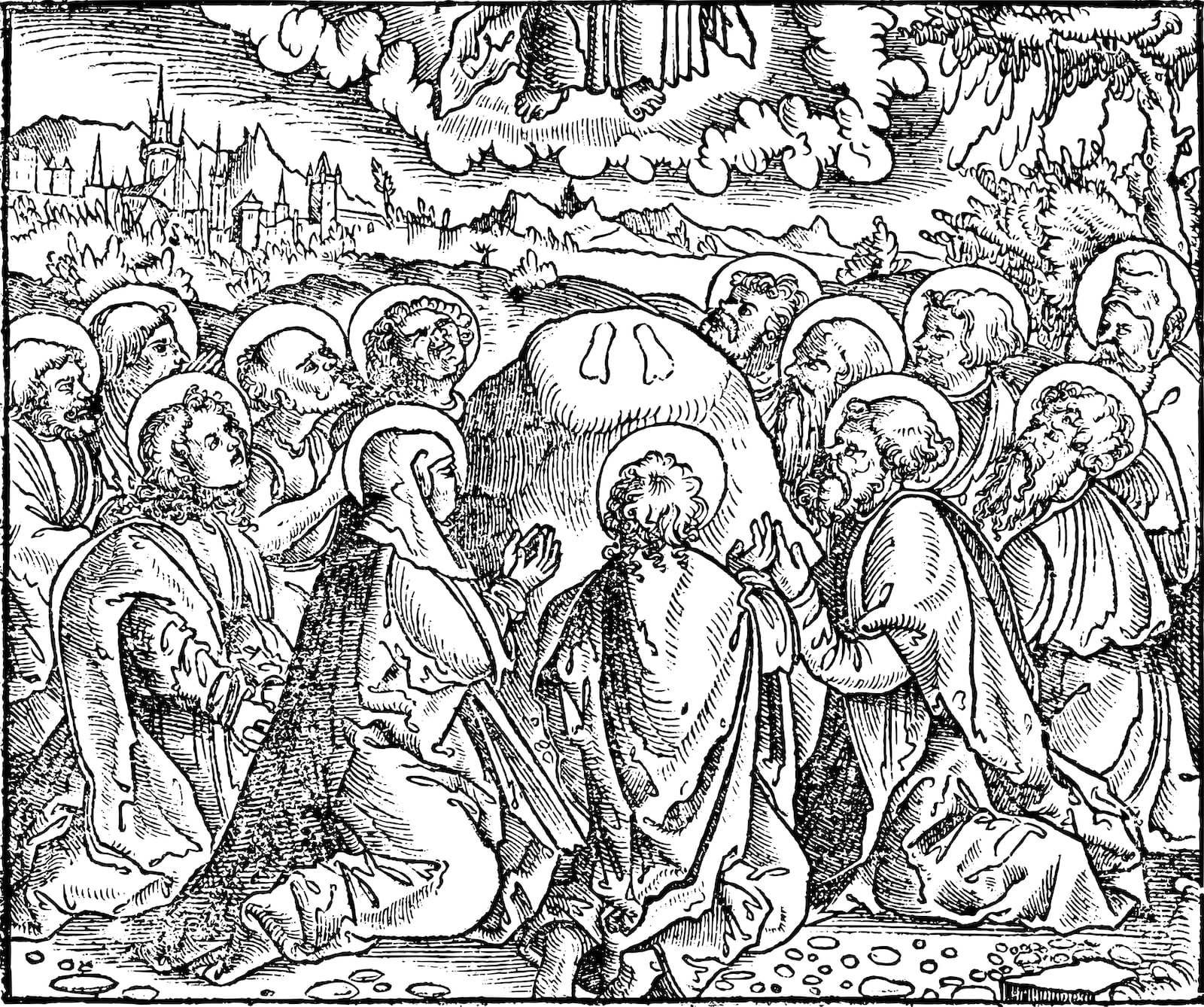Herman Melville’s Moby Dick (1851) is an American novel about a hunt for a deadly whale. Like other epics, the story is built around real historical events and circumstances. New Englanders really did chase whales in wooden boats with spears, and Melville had experience with this. On at least one famous occasion, which inspired the climax of the tale, a whale really did repeatedly attack and sink a whaling vessel, to great loss of life.
The narrative is simple. After setting out on a whaling expedition, it is revealed to the crew of the Pequod that their quest has a more personal purpose. Captain Ahab is hunting the white whale that took off his leg from the knee. After hunting and harvesting other whales, after many adventures at sea, after warnings, signs, and portents, Ahab finally grapples with his nemesis. Ahab provoked the white whale to wrath more than any of the other whalers before him (1 Kings 16:33). In the end, the whale destroys the sailors, the ship, captain Ahab, and only the narrator—“Call me Ishmael”—is left to tell the tale.
Ishmael weaves this tale from a dizzying variety of sources, including sermons and soliloquies, dreams and documentary, mythological cetology, scientific cetology, popular cetology, technical treatise and theatrical declamation, comedy and tragedy. Matching Ishmael’s malleable and exploratory perspective is Melville’s flexible, inventive use of the English language, which may exasperate the linguistic orthodoxist. Like Shakespeare, Melville remixes our mother-tongue, as though his (for example) “leviathanic” thoughts must burst the shores of standard usage.
Ishmael and Ahab are the twin sources of movement in the story. Ahab’s obsession drives the story forward. Ishmael’s digression and documentation amplify it. Ahab’s soul is single-minded action; Ishmael’s is multifaceted contemplation. Both pursue the whale.
But what, exactly, is a whale?
For Ahab, the whale is the embodiment of all that is unconquered by man, and whose existence cannot be justified or permitted:
“All that most maddens and torments; all that stirs up the lees of things; all truth with malice in it; all that cracks the sinews and cakes the brain; all the subtle demonisms of life and thought; all evil, to crazy Ahab, were visibly personified, and made practically assailable in Moby Dick. He piled upon the whale’s white hump the sum of all the general rage and hate felt by his whole race from Adam down; and then, as if his chest had been a mortar, he burst his hot heart’s shell upon it” (Moby Dick, ch. 41).
For Ishmael, the novel is the account of the failure to answer this question, what is the whale?
As a narrator, Ishmael offers knowledge from an unlikely combination of sources: etymological research, an encyclopedic collection of cetological citations, classical education, first-hand experience (“a whale ship was my Yale College and my Harvard”), and the technical know-how of the whaling industry. As Ahab chases his fate, we go with Ishmael, armed with this context, chasing down the meaning of it all. But some things, the secrets of the whale’s nature and dwelling, are too deep for man, fathoms beneath the sea. From no matter how many angles, the better part of the monster remains submerged from sight. And even when men capture, kill, and cut apart—analyze—things, even then the essence of the mystery eludes us beyond the sum of its dissected and processed parts. For all Ishmael’s research, powers of perception, poetry, and philosophy, the whale is no more captured in the pages of Moby Dick than he is conquered by captain Ahab.
This helps explain why the novel was reborn, and now lives, as perhaps the definitive American novel. The image of the self-reliant, single-minded, goal-oriented American defiantly destroyed in the quest to slay a mythical beast far from home on the great frontier of the open ocean has become a cultural icon—as inspiration and warning. The novel retells the stories of St. George and the Dragon and Beowulf, and is retold in a film like Jaws. It views this story through an epic glass, insisting that this particular series of maritime events has to do with things universal, things which pertain to the heart and destiny of all humanity. It retains both the moral strength and ambiguity of the Greek tragedians, portraying hubris in its tempting glory and its certain ruin. It explores all this from as many angles as there are disciplines of the academy: empirical science, theology, comparative cultural anthropology and literature, history, poetry and art, psychology, ethics and philosophy, critical analysis of economic and social issues, and detailed reporting about the crafts and trades which run the sailing and whaling enterprise. In short, the story is as simple, as intricate, and as deep as the sea itself.
For all this, though, the narrator is left, at the end, alone and afloat in the midst of this sea. With the messengers who brought Job the news of his catastrophes, he is reduced to the mere witness and reporter of an archetypal disaster whose source and meaning are beyond his words. “And I only am escaped alone to tell thee.”




